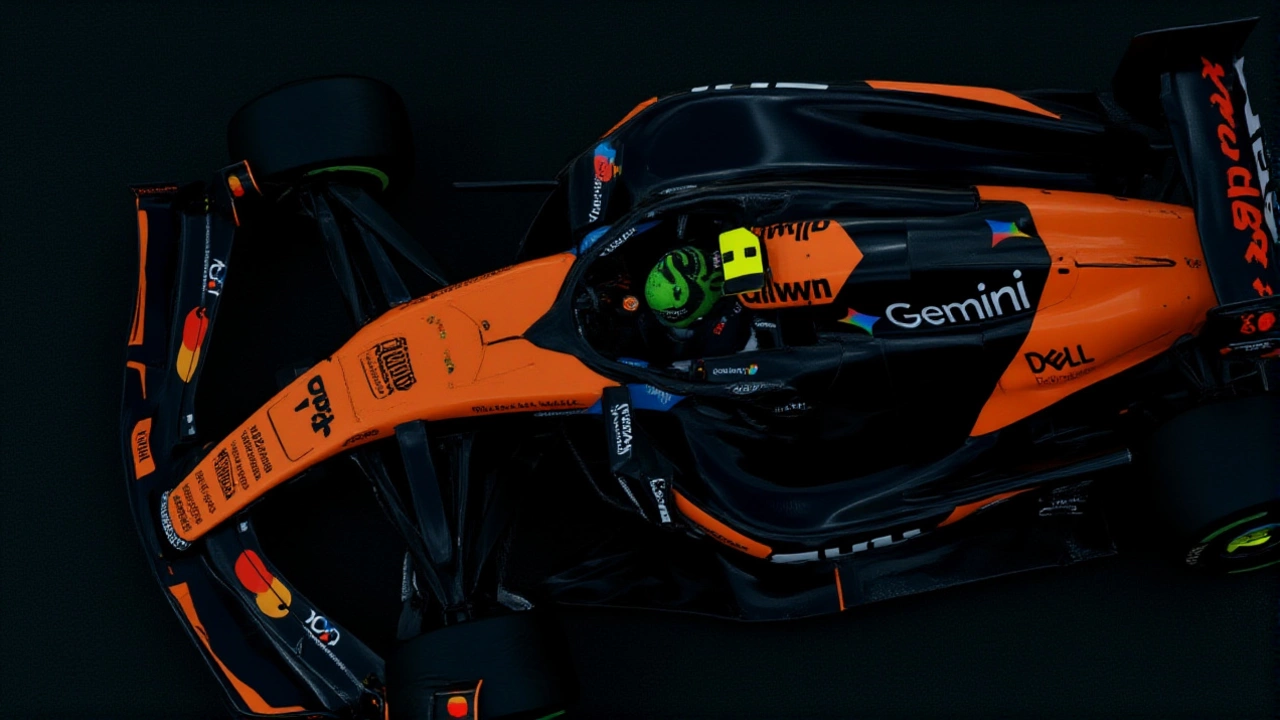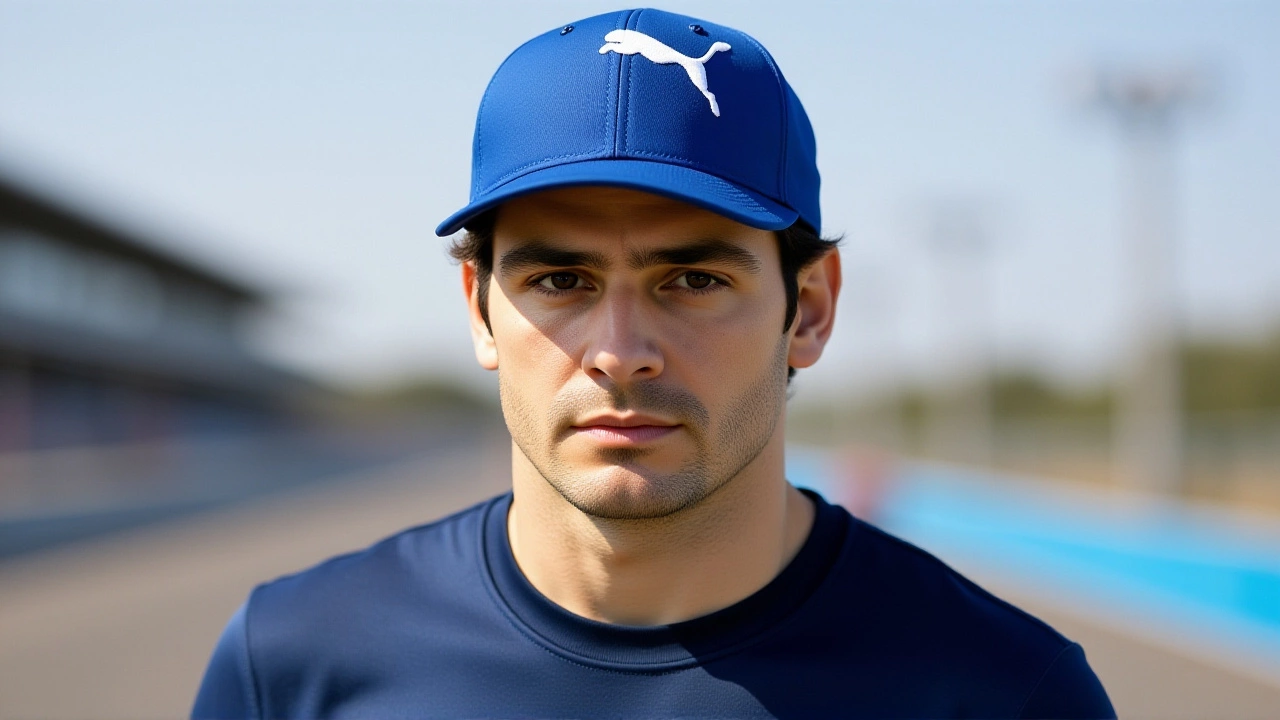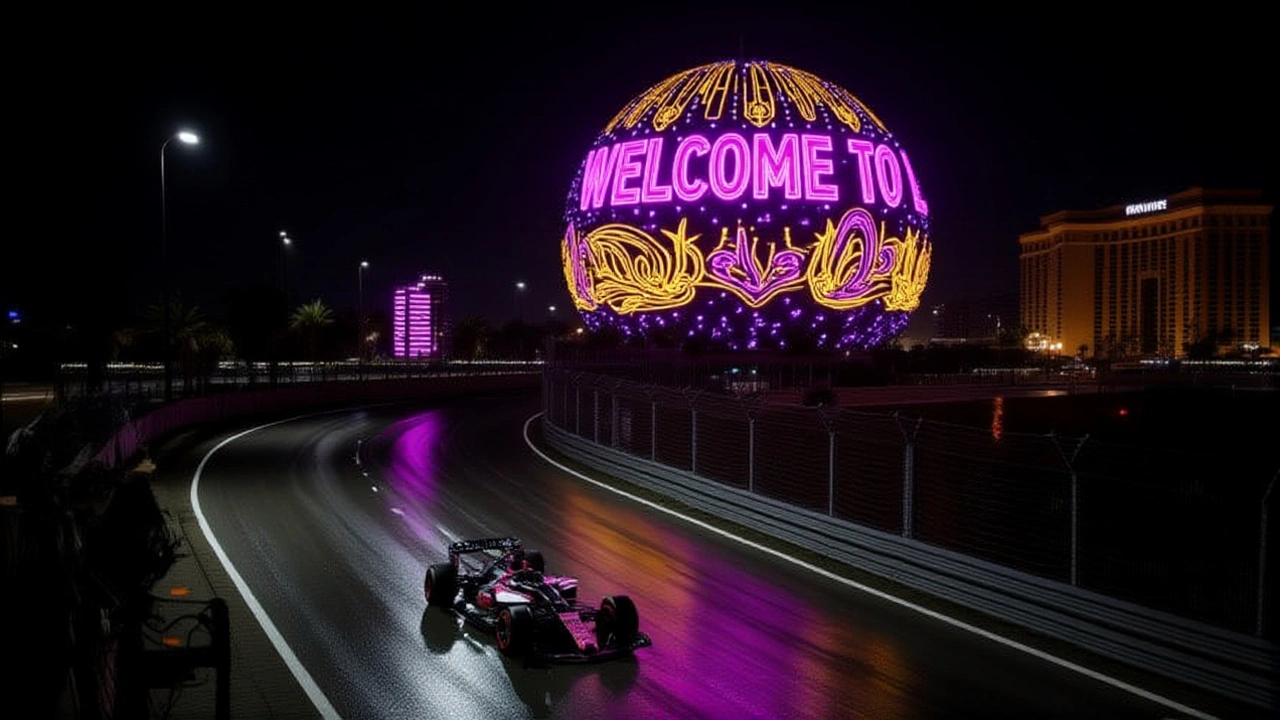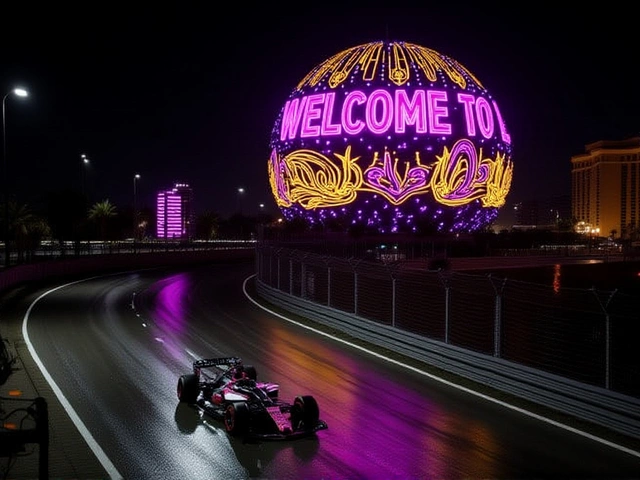When Lando Norris locked in a blistering 1:47.934 lap in the rain during Friday’s qualifying for the Heineken Las Vegas Grand PrixLas Vegas Strip Circuit, it felt like destiny was writing his name in the championship record books. The 24-year-old British driver from Bristol, leading the McLaren Racing charge, claimed his third straight pole — a staggering run of precision under pressure. But by Saturday night, the story had twisted into something far more dramatic: a disqualification, a title race reshaped, and a quiet, relentless Max Verstappen stepping into the spotlight.
The Rain-Soaked Qualifying Masterclass
The Las Vegas Strip Circuit turned into a slick, glittering ribbon under intermittent showers. All three qualifying segments — Q1, Q2, Q3 — were run in damp conditions, turning tire management into a high-stakes gamble. Norris, calm and clinical, carved out his time with surgical accuracy. He beat Max Verstappen of Red Bull Racing by 0.323 seconds and Carlos Sainz of Williams Racing by just 0.039 — a razor-thin margin in F1 terms. Behind him, George Russell in fourth and Oscar Piastri, Norris’s own teammate, in fifth, were left chasing shadows.
"Pole in such tricky conditions was definitely not easy, but that makes the result even better," Norris told McLaren’s official report. And he wasn’t wrong. With 84 points still up for grabs across the final two races — Qatar Grand Prix and Abu Dhabi Grand Prix — Norris held a 24-point lead over Piastri. A win here? That could’ve sealed the title in Qatar. The math was simple, and the momentum was undeniable.
The Race That Changed Everything
Saturday night started with chaos. Verstappen, starting second, got a perfect launch and squeezed past Norris on the outside of Turn 1 — the British driver, perhaps overconfident or misjudging grip, locked a wheel and let the Dutchman slip through. By Turn 3, Verstappen was gone. Russell followed him home, finishing +23.5 seconds behind. Kimi Antonelli, the 18-year-old Mercedes rookie, shocked the paddock with third. Lewis Hamilton, starting last after a penalty, clawed his way up to eighth on hard tires — a masterclass in patience.
But the real bombshell came after the checkered flag. The stewards reviewed the skid block wear on both McLaren Racing cars. The rules are strict: if the plank under the car wears below 9mm, it’s a disqualification. Norris and Piastri’s cars, according to The Race, were found to be at 8.7mm. The decision was confirmed within 90 minutes of the race ending. The official results? Suddenly, Norris — who crossed the line second — was erased. Piastri, who finished sixth, vanished too.
The ripple effect was immediate. Verstappen, now officially first, drew level with Piastri in the standings — both now tied at 116 points. Norris, despite his pole and near-win, remained at 140. But the gap to second place? Still 24 points. The title isn’t over. But it’s no longer a coronation.

Chaos on the Strip
The opening lap was a disaster zone. Gabriel Bortoleto and Lance Stroll tangled at Turn 1, both out with suspension damage. Alex Albon collided with Hamilton, forcing the seven-time champion to pit for a new front wing. Four retirements in the first five laps. It was a street race — brutal, unpredictable, and unforgiving.
And yet, the race still delivered drama. Isack Hadjar (Racing Bulls) impressed in sixth. Nico Hulkenberg (Kick Sauber) held on for seventh. And in the back, Liam Lawson and Franco Colapinto completed the race one lap down — a quiet victory in a race that swallowed so many others.
What This Means for the Championship
Before Las Vegas, Norris was on the cusp of wrapping up his first world title. Now? It’s a fight. Verstappen, who hasn’t won a championship since 2022, has been resurrected. He’s not just chasing Norris — he’s chasing the ghost of his own legacy. Piastri, once the underdog, now has a teammate’s misfortune as his lifeline.
"This disqualification keeps Verstappen’s slim hopes of a fifth Formula 1 world championship alive," wrote Sports Illustrated. And ESPN put it bluntly: "Norris would have had a very real possibility of wrapping up the title at the penultimate round in Qatar. Now? He’ll need to survive two more races under the same pressure — but without the buffer he thought he had."
The Las Vegas Strip Circuit — 6.120 kilometers of neon, noise, and narrow asphalt — delivered exactly what F1 promised: unpredictability. It didn’t crown a champion. It turned the season into a thriller.

What’s Next? Qatar and the Final Countdown
The next race — the Qatar Grand Prix on November 28, 2025 — is now a do-or-die for Norris. He can’t afford a single mistake. Verstappen, meanwhile, needs to win both remaining races and hope Norris slips. Piastri? He’s now the wildcard. If he wins in Qatar and Norris falters, the title fight becomes a three-way. And with Abu Dhabi’s long straights and high-speed corners favoring Red Bull’s aerodynamic efficiency, the cards are stacked differently now.
McLaren’s technical team will be under fire. Skid block wear isn’t just about driving style — it’s suspension setup, ride height, and tire pressure. They’ll be re-engineering the MCL39 before Qatar. Meanwhile, Red Bull is quietly celebrating a lifeline they didn’t know they had.
Frequently Asked Questions
Why were Norris and Piastri disqualified for skid block wear?
F1 regulations require the skid block — a wooden plank under the car — to remain above 9mm in thickness to prevent teams from running the car too low for aerodynamic advantage. Norris and Piastri’s cars were measured at 8.7mm after the race, indicating excessive bottoming out. This isn’t rare — but it’s usually caught in practice. Las Vegas’s bumpy street surface made it more likely, and the stewards enforced the rule strictly.
How does this affect the Drivers’ Championship standings?
Before the disqualification, Norris led with 140 points, Piastri had 116, and Verstappen had 92. After the DQs, Norris remains at 140, but Verstappen and Piastri are now tied at 116. That means Verstappen closes the gap to 24 points — the same as before — but now he’s tied with Piastri, meaning the title race has become a two-horse battle between Norris and the Red Bull-McLaren duo. Norris still leads, but the margin is no longer safe.
Could McLaren have avoided the disqualification?
Possibly. The Las Vegas circuit is notoriously rough, with bumps and curbs that punish undercarriages. Teams typically raise ride height slightly on street circuits to protect the skid block. McLaren, however, chose to prioritize downforce — a gamble that paid off in qualifying but backfired in race conditions. Post-race analysis suggests they may have underestimated how much the car bottomed out under heavy fuel loads and tire degradation.
What does this mean for Verstappen’s chances at a fifth title?
It revives them. Verstappen needed a miracle after losing ground earlier in the season. Now, with two wins possible and Norris under pressure, he’s back in the hunt. He must win both Qatar and Abu Dhabi, and hope Norris finishes no better than third in Qatar and second in Abu Dhabi. It’s mathematically possible — but emotionally, it’s a massive psychological shift. Verstappen is no longer chasing; he’s fighting for his legacy.
Why did Hamilton finish eighth despite starting last?
Hamilton started at the back due to a gearbox penalty, but his team opted for a hard tire compound in the opening stint — an unusual strategy that gave him exceptional durability. While others pitted early for fresh tires, he stayed out longer, conserving tires and capitalizing on traffic chaos. He gained positions as rivals pitted and crashed, turning a 20th-place start into an eighth-place finish — a testament to his racecraft and team strategy.
Is the Las Vegas GP likely to change its format after this race?
Unlikely. The FIA and Las Vegas organizers pride themselves on the street circuit’s raw, unpredictable nature — and the chaos is part of its appeal. However, they may revisit skid block inspection protocols, possibly introducing real-time monitoring during the race. The real question isn’t about the track — it’s whether F1 will enforce rules more consistently in high-stakes moments, or let drama take precedence.

